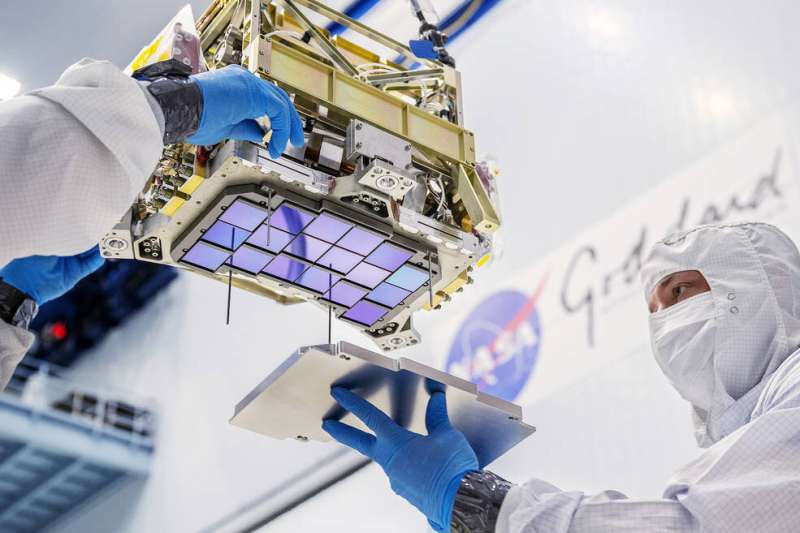This article has been reviewed according to Science X's editorial process and policies. Editors have highlighted the following attributes while ensuring the content's credibility:
fact-checked
trusted source
proofread
NASA completes heart of Roman Space Telescope's primary instrument

The heart of NASA's Nancy Grace Roman Space Telescope was recently delivered to Ball Aerospace in Boulder, Colorado, for integration into the WFI (Wide Field Instrument). Called the FPS (Focal Plane System), it serves as the core of Roman's camera. When the mission launches by May 2027, astronomers will use this system to gather exquisite images to help unravel the secrets of dark energy and dark matter, discover exoplanets, and explore many topics in infrared astrophysics.
The FPS is made up of a large detector array and its associated electronics. The detectors were developed by engineers at NASA's Goddard Space Flight Center in Greenbelt, Maryland, and Teledyne Scientific & Imaging in Camarillo, California. The Goddard team also developed the electronics and assembled the FPS. Each of Roman's 18 detectors has 16.8 million tiny pixels, which will provide the mission with remarkable image resolution. Through these "eyes," we will be able to peer through dust and across vast stretches of the cosmos, creating high-resolution panoramas of the universe.
"Roman's focal plane array is one of the biggest that has ever flown onboard a space-based observatory," said Mary Walker, the Roman WFI manager at Goddard. "Its creation is the product of many years of innovation from a very dedicated team—one that is eagerly anticipating the incredible science Roman will yield."
Once the FPS is installed in the spacecraft's WFI—its camera—technicians will continue the build by integrating the instrument's radiators.
"For optimal performance, the detectors must be operated at minus 288 degrees Fahrenheit, or minus 178 degrees Celsius," said Greg Mosby, a research astrophysicist and Roman detector scientist at Goddard. "Roman's detectors are so sensitive that nearby components in the Wide Field Instrument must also be cooled, otherwise their heat would saturate the detectors, effectively blinding the observatory." The radiators will redirect waste heat from the instrument's components away from the detectors out into cold space, ensuring that Roman will be sensitive to faint signals from distant galaxies and other cosmic objects.
After the radiators are installed, Roman's camera will be complete and ready for thermal vacuum tests this summer. The team expects the entire WFI to return to Goddard in spring of 2024, where it will ultimately be integrated into the rest of the observatory.
Provided by NASA





















